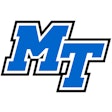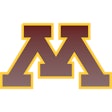
Michael LeRoy is a professor in the University of Illinois School of Labor and Employment Relations, and College of Law, as well as a member of the university's athletic board since 2014. Writing for Sportico, LeRoy paints a picture of massive athletics debt and misleading administration on his campus and beyond.
According to LeRoy, the Knight Commission’s database for Big Ten Conference schools, including Illinois, shows the median annual interest paid on facilities debt rose sharply from 2014 to 2019, the last year that reporting is available: $10.7 million (2014); $10.1 million (2015); $10.0 million (2016); $10.1 million (2017); $11.8 million (2018); and then jumping to $14.8 million in 2019.
The median accumulated debt for Big Ten schools grew from $133.3 million in 2014 to $164.5 million in 2019.
Illinois’ debt problem is much worse, LeRoy reported. "Our athletic department paid interest on facilities debt of $11.2 million (2014), $16.7 million (2015), $26.1 million (2016), $20.0 million (2017), $21.3 million (2018) and $22.7 million in 2019. Illinois’ 2020 NCAA financial statement reported total athletics-related debt of $315,822,286. Our athletically related facilities annual debt service was $21,564,413.
"Simply put, Illinois’ athletic program has been deeply mired in debt since 2014."
The situation in Champaign shows no signs of improving. Athletic revenues at Illinois totaled $122,566,259 in 2020-21. Illinois paid more than 15 percent of its revenues toward interest, and the school’s NCAA report shows that outstanding principal declined only slightly from the previous year.
And Illinois and the Big Ten are not alone. According to a Sportico database of 2019-20 financial reports, Iowa led the nation in paying “facilities debt service,” at $32,599,749, followed by Ohio State ($29,748,769), Alabama ($23,822,661), Texas A&M ($23,454,394), Michigan State ($21,484,385), Texas ($20,765,071), Illinois ($19,007,456), Oregon ($18,720,155) and Michigan ($17,358,525).
Meanwhile, LeRoy reports that his school's athletic board, chartered to serve as a "check and balance," has "been captive to two athletic directors’ control over information and meetings. Thus, we haven’t been able even to advise our athletic department on debt matters."
"Josh Whitman and Mike Thomas — athletic directors during this period — never voiced concern about this mounting debt problem," LeRoy writes. "To the contrary, they briefed the board on improving revenue from the Big Ten and other sources. All of this is true but profoundly misleading.
"When members of our financial subcommittee pressed AD Whitman for details on the construction of a $79.2 million football practice facility in 2018, we were politely but firmly deflected.
"It wasn’t until Sportico ran an article in November 2020 that we learned that the University of Illinois System had loaned our athletic department the funds for the football practice facility, and $32.5 million for the Ubben Basketball Complex."
LeRoy offers four points of emphasis when examining the debt problems at Illinois and elsewhere.
"First, the University of Illinois is a public, taxpayer-supported institution. The school should publicize these internal loans for taxpayer accountability," he writes.
"Second, if loans are not made public, there is no practical way to ensure that loan terms are enforced.
"Third, athletic debt is a problem because COVID-19 is widening the divide between athletics and academics," LeRoy writes. "My campus sent this mass email on June 2, 2020: 'We are slowing down or postponing capital projects to preserve cash reserves and financial flexibility. … We have asked units to prepare financial projections based on 5 to 10 percent reductions in state/tuition allocation for all campus units. … We expect many vacant positions to remain open for an extended period.' Yet, in August 2020 the UI System quietly entered into a loan agreement with the athletic department to provide $32.5 million for a basketball facility upgrade. Sportico uncovered the loan—and it was only then that our athletic board had its financial questions answered. As athletic departments bet the house with loaned money during COVID-19, their debts may be harder to pay down—even to service—as football and men’s basketball limit attendance and cancel games."
"Fourth, the cost of doing business as a Power 5 school is soaring," LeRoy continues. "The 2021 football season ended with gilded $95 million contracts for coaches (Mel Tucker, Brian Kelly, among others). Those contracts make Illinois’ football coach look underpaid at about $4.2 million a year. As the coaching pay scale climbs, paying off debts will be harder."
LeRoy, author of the book Collective Bargaining in Sports & Entertainment: Professional Skills and Business Strategies, also predicts that the NCAA's shifting view of athletes as employees could put even more financial stress on athletic departments if they suddenly need to pay their players market salaries.
He concludes, "J. Paul Getty famously said: 'If you owe the bank $100, that’s your problem. If you owe the bank $100 million, that’s the bank’s problem.' In 2022 and beyond, the Illinois athletic department—and likely others—will test that maxim with the school that serves as its bank."





































